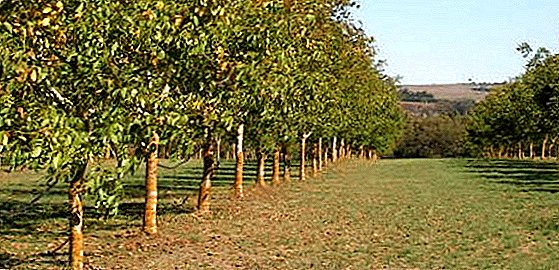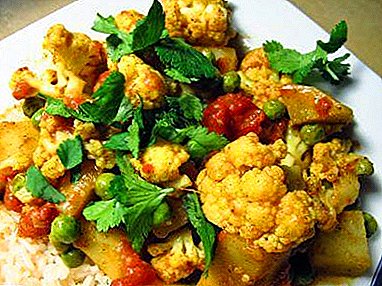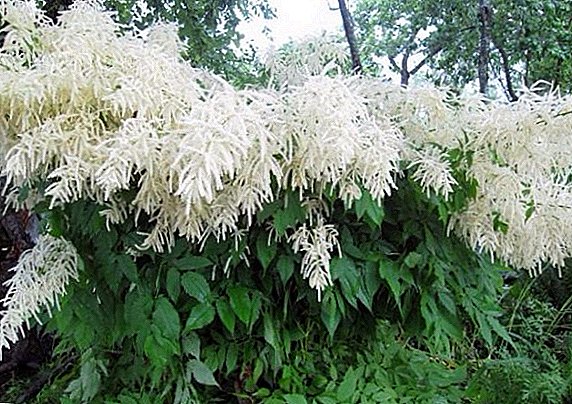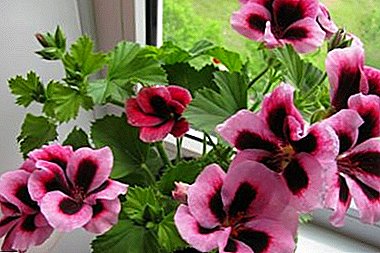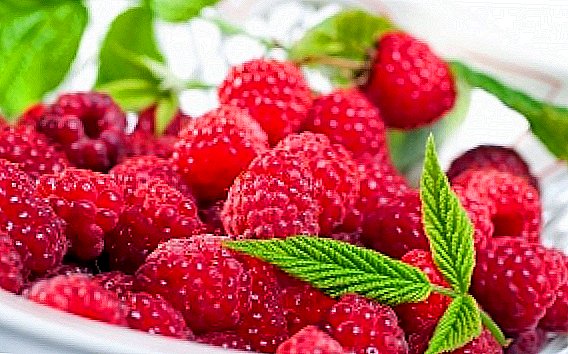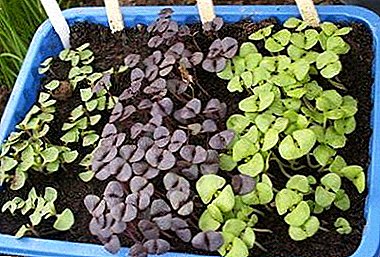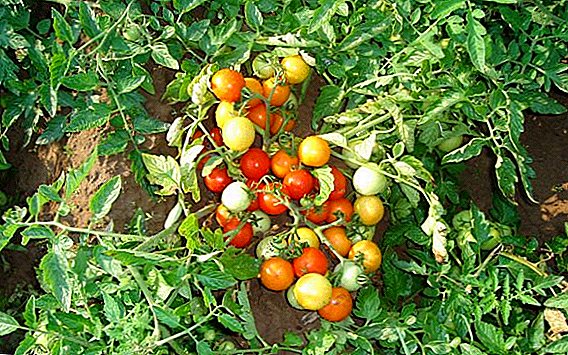 Tomatoes of the "Dwarf" variety are deservedly the preference of many gardeners, because they are resistant to both heat and cold, give a good and stable yield and are not exposed to such a common disease of vegetable crops as late blight.
Tomatoes of the "Dwarf" variety are deservedly the preference of many gardeners, because they are resistant to both heat and cold, give a good and stable yield and are not exposed to such a common disease of vegetable crops as late blight.
In addition to these advantages, the tomatoes "Dwarf" do not deteriorate during transportation and are perfect for both canning and salads.
Variety description
"Dwarf" is a fairly compact variety of tomatoes, which gives not only small fruits, but also grows low and branches little. Given the miniature and accuracy of the plant form, these tomatoes can be grown not only for harvesting, but also for aesthetic purposes. Bushes well decorate the dacha, as well as suitable for growing on the windowsill or on the loggia, balcony.

The main characteristics of a variety of tomatoes "Gnome":
- determinant type - has a limited and small growth;
- grows no more than 50-60 cm in height;
- branches little bush neat;
- shtambovy - upright, short, does not fall on the ground even under the weight of fruits;
- there are not many leaves, and they are small, medium-sized, of the usual type, light green, slightly wrinkled, glossy;
- the stems are rather thick, fleshy, strong;
- inflorescences are compact and simple. The first inflorescence appears after the 6th or 7th leaf, and all the rest are formed every 1 or 2 leaves.
Important! The distinctive features of the "Dwarf" from the rest of the tomatoes - the fruits are very similar to cherry, but larger, the bushes are compact, and the harvest from one bush is quite rich.This variety is considered to be intended for open ground, but it can also be grown in greenhouse conditions, although in this case the yield is slightly reduced. In addition to open ground, tomatoes are quite suitable for growing in tubs and flowerpots, because their compact dimensions are quite acceptable for placement in city apartments on a loggia or balcony.

The advantages of a variety of tomatoes "Gnome":
- yield;
- early maturity;
- short stature;
- resistance to the majority of diseases that are susceptible to nightshade;
- unpretentious care;
- resistance to temperature extremes;
- excellent taste of the fruit;
- possibility of transportation without loss of presentation;
- long shelf life.
The determinants include “Raspberry Giant”, “Klusha”, “Chocolate”, “Rio Fuego”, “Riddle”, “Stolypin”, “Sanka”, “Apparently-invisible”, “Lazyka”, “Bobkat”, “Lyan” "," Beginner "," Balcony miracle "," Cio-Cio-San ".Grade Disadvantages:
- landing in open ground is unacceptable if there is still a threat of night frost;
- due to the short stature of plants in the greenhouse, the yield of the product from 1 square meter. m less than in open ground, which makes cultivation in the greenhouse unprofitable;
- without additional feeding yield decreases slightly.

Fruit characteristics and yield
The variety of tomatoes "Dwarf" is early ripening, and the first ripe tomatoes appear only about 90-110 days later after germination. Provided that the night frosts just passed, these tomatoes can already be planted in the ground. In a greenhouse, this is possible already at the beginning of April or even as early as March, and they are most often planted in the garden from the beginning of May. Thus, from the first summer days to the end of the summer season you can harvest.
Tomatoes at the "Gnome" have a rounded shape, the skin is smooth and shiny. The flesh in them is juicy and fleshy. Mature fruits have a bright red color. The taste is good, rich, fresh. The weight of one fruit is in the range of 50-60 g.
Eating tomatoes can be both beneficial and harmful to health, read more about the properties of the product.
From one bush can be collected from 1.5 to 3 kg of tomatoes. Or from 1 square. m, which are 5-6 bushes, there will be a yield of 5 to 7 kg minimum.
The "Gnome" high probability of the ovary, even under adverse conditions. About 60 units of tomatoes can be harvested from a single plant, because this variety has a very long ripening period.
Tomatoes are well stored and transported, they do not slezhivatsya and do not crack.

Important! The fruits of tomato varieties "Dwarf" are suitable for all types of cooking: canning, curing, freezing, for preparing fresh salads, as part of main courses or even in savory pastries.
Tomatoes keep their shape well, retain their flavor and do not lose their structure during cooking, which makes it possible to use them in a wide variety of culinary options.
Selection of seedlings
Ensuring that you get a good harvest is good seedling. The surest way to be sure of the quality of the seedlings is to grow it yourself from seed.
But if you don’t want to do this or you don’t have the opportunity to do it, or for some reason you missed the time when you need to sow the seeds, then you have to take ready seedlings on the market.
Learn more about the schedule of work for tomatoes on the lunar calendar.
The choice of seedlings must be approached responsibly, since the quality of future adult plants, as well as their yield, depend on the quality of seedlings.

Therefore, in this matter should be guided by the following criteria:
- Do not buy seedlings on which the ovary has already formed. Small red tomatoes attract attention, but this is a deceptive impression. In most cases, such an early ovary perishes when it is planted in open ground, and the next ovary will still have to wait, and this is a lost time, when you could already harvest the first crop.
- You should also not buy too thick "jungle" of tomatoes, which have very thick and fleshy stems and huge foliage. Such plants look attractive, but this means that the sprouts were fertilized with nitrogen, which gives a violent growth of tops, but sadly affects the amount of crop, which practically will not be.
- The optimum thickness of the stem in a good seedling should be approximately as a simple pencil. Also, young tomatoes of the "Dwarf" variety should have about 7-8 sheets and one clearly visible flower brush.
- Look closely at the lower leaves - they should be a uniform green color, without yellowness, without brown or darkened tips, not worn out.
- There should be no damage and pests on the plants - no rot, no mold, no bugs.
- It is best to take the already peaked seedlings. It has an extensive and robust root system, which is an indicator of the viability of the plant. This is evidenced by a dense lump of roots. Unpicked seedlings have a tap root system, which means it will take longer to settle down, because it still needs to increase the root mass, therefore it is better to abandon such plants.
- Prefer tempered seedlings. It is adopted faster, it is not afraid of cold snaps and is more resistant to temperature extremes. Such plants usually have a rich bright green color. Hothouse seedlings, in contrast to the hardened, has a pale green, delicate color and when it is planted in the ground it is very afraid of temperature changes - the plants often die.

Did you know? The world still can not decide what is a tomato - berry, vegetable or fruit. Botany identifies it as a berry. In America, the Supreme Court ruled that it was a vegetable. And the European Union insists that it is a fruit.
Growing conditions
When growing seedlings it is important to consider several criteria:
- soil composition;
- humidity;
- lighting;
- temperature conditions.
Learn how to determine the acidity of the soil, how to disinfect the earth, how to save space and soil when planting seedlings, how to use cassettes, peat tablets for seedlings.
Humidity. These tomatoes need regular hydration, but do not like an excess of moisture. Water the plants as the top layer of the earth dries, but it should not dry out. Also, the water should not accumulate at the bottom, otherwise the roots will rot. Therefore, make sure that the tanks with seedlings have a good drainage system, and the excess water freely leaves the pot or boxes. Watering is carried out with water at room temperature.

Lighting. Light day for "Gnome" should last at least 11-12 hours a day. Therefore, seedlings are kept on window sills or, if the daylight is short for a natural day, under fluorescent lamps. This variety is usually not drawn even with a lack of light, but with a sufficient amount of plants grow faster.
Familiarize yourself with the rules for choosing seedlings.
Temperature mode. If you grow the seedlings themselves from the seeds, after the appearance of the first plant shoots, you need to get out of the insulated place and immediately begin to harden. This means that containers with plants are placed on a glazed loggia or veranda, where the temperature will be between +14 ° C and +16 ° C.
With the appearance of the first sunny days and the same temperature outside, young tomatoes can be brought to the open sun for a while. It perfectly hardens the shoots, because they have innate protection from UV rays. Further, if the first days are missed, such an event no longer makes sense.
In such a cool temperature regime, the seedlings are kept for about two weeks, after which the temperature is raised to values from +18 ° C to +20 ° C. But at night you can still lower the temperature to + 14 ... +16 ° C. To do this, you can simply open the window, but be sure that there are no drafts, and the plants are not blown.
Did you know? In Europe, the first tomatoes appeared only in the XVI century and for a long time were used exclusively for ornamental purposes, as they were considered not only not edible, but even poisonous.

Seed preparation and planting
If you decide not to buy ready-made tomato seedlings "Dwarf", you can grow them yourself from seeds. This process is carried out in several stages.
- Planting time is an important factor when planting, which depends on your region of residence. You need to push off from the fact that the seedlings are ready to be transplanted into the open ground after about two months (60 days) from the appearance of the first shoots. And plants are planted in the garden after the temperature stabilizes outside, and night frosts no longer threaten. In central Russia, this period begins approximately at the end of April - beginning of May. This means that the seeds need to be sown two months before this - in late February - early March. In colder regions and northern latitudes, this occurs later. In the southern regions - before. The main thing is that after disembarking in open ground the air temperature does not fall to negative values.
- The process of sowing seeds begins with their preliminary preparation for planting in the soil. Preparation consists of special treatment of seeds, which increases their germination and resistance to various diseases. First of all, the seeds need to be treated with potassium permanganate for 20 minutes, for this the Fitosporin preparation is also suitable. After that, the seeds are washed under running water and immersed for 5-6 hours in a growth stimulator. For this you can also use the drug "Shine-1."
- The seeds are now ready for sowing in boxes that have a drainage layer and holes for waste water to escape. The soil in the boxes must be prepared, disinfected, nutritious, light, breathable, moistened.
- The seeds are spread into the soil at a distance of 2-3 cm from each other and covered with a thin layer (5-6 mm) of soil from above. [/ Li]
- Boxes with seedlings are covered with a transparent film to create greenhouse conditions and placed in some warm place - for example, near the battery or in the kitchen. The temperature should be between +25 ° C and +30 ° C.
- Once or twice a day, the film can be slightly opened for airing and to avoid the appearance of mold.
- Watering the seeds is not necessary, as under the film moisture is well preserved during the entire period of maintaining greenhouse conditions, and the soil does not dry out. But if the soil still dries, its moisture can be restored by spraying water from a spray bottle. If, on the contrary, humidity is excessive, open the drawers for a day and let the ground dry out a little.
Video: how to plant tomatoes
Important! High humidity under the film sometimes causes mold on the surface of the soil. In this case, the affected upper layer must be carefully collected and removed, and the ground should be watered with a disinfecting compound. - for example, a light solution of potassium permanganate or antifungal drugs such as "Fitosporin" or "Fundazole."
Maintenance and care
The higher the temperature, the faster the first shoots will appear. If the temperature is above +25 ° C, it may occur earlier than in a week. From the moment of the appearance of the first shoots, the seedlings are opened and transferred to the window sill, lowering the temperature to + 14 ... +16 ° C.
After about a week and a half in the phase of two true leaves, seedlings dive into separate cups or small containers. Do it carefully, trying not to damage the delicate roots.
2-3 weeks after the first shoots, the plants are given the first feeding. In the future, tomatoes are fed once a week. As fertilizers, you can use manure, biohumus, humic fertilizers.
Find out in more detail how to choose the optimal time for planting tomatoes, how to care for tomato seedlings, how to dive tomatoes, how to feed tomato seedlings when planting tomatoes in open ground.
Watering is carried out regularly, without pouring. The best is considered to be watered once a week until the first 5-7 leaves appear, and after that you can water a little more often - once within 3-4 days.

Transplantation into open ground takes place approximately 2 months after the appearance of the first shoots. For tomatoes, "Dwarf" is best to choose places in the garden, protected from drafts and wind, where water does not accumulate during the rain and there is good illumination by the sun.
Important! If there is a likelihood of night frosts, in case of early disembarkation, in order to avoid freezing of plants, it is better to wrap them up with a film for the first couple of weeks.Landing is better to spend on cloudy days or in the evening to avoid burns from direct sunlight.
Since the bushes at the "Gnome" compact, then 1 square. m of land can accommodate about 5-6 plants. The holes are dug at a distance of 30-40 cm from each other, and the distance between the rows should be about 50 cm.
Before transferring the seedlings to the wells, they are fertilized. Ash, compost and mineral fertilizers are poured at the bottom of the pit. After that, seedlings are immersed in the wells, covered with earth, slightly tamped and watered abundantly.

If the weather is predominantly sunny outside, then you need to attend to the shelter of young plants for the first time from direct sunlight. It is necessary that the immature tomatoes are not burned.
In the future, care for the "Gnome" is not burdensome. Tomatoes grow well if they are periodically fed. In the first couple of weeks, plants can be given top dressing from herbal infusions containing nitrogen. And further use phosphorus-potassium fertilizers.
Since the variety is very sensitive to feedings, we recommend that you familiarize yourself with the technology of using nettle, banana peel, potato peelings, eggshell, iodine, boric acid, yeast, and whey as fertilizer.
As the weeds appear, weeding is carried out, and the soil is loosened. When the earth dries up - the bushes are watered. A fertilizer is given after watering or rain.
In tying tomatoes variety "Dwarf" do not need, as they are short, have a straight and thick stem that does not fall on the ground with the appearance of fruit.

Pasynkovka these tomatoes are also not required, since they have a limited growth and give no more than one or two stepsons.
Did you know? The weight of tomato fruits depends on the variety, and there are fruits that exceed 1 kg. The record was set in the USA, where they grew a giant tomato weighing almost 3 kg!
Disease and pest prevention
Tomatoes "Dwarf" initially more resistant than other varieties of tomatoes, to diseases inherent in the plants of the Solanaceae family. They have excellent resistance to late blight and macrosporosis. But if you do not follow the rules of care or under adverse weather conditions, plants can be affected by some fungal and viral diseases.
Learn how to deal with the diseases and pests of tomatoes.
In order to protect plants from disease, it is necessary to adhere to several simple rules of prevention.
- It is not necessary to plant tomatoes on those parts of the vegetable garden, where previously (within the last 2-3 years) other solanaceae grew - pepper, eggplants, potatoes. It is better to select areas where the predecessors were cucumbers or cabbage.
- Prevention with drugs is always carried out at the stage of seeds and seedlings and consists in the treatment of young plants with means of protection - a solution of potassium permanganate, a weak solution of blue vitriol, preparations "Shining-1" or "Fitosporin".

Important! Эти же методы профилактики эффективны не только для защиты от грибков и вирусов, но и от появления вредителей - колорадского жука, белокрылки или слизней.If the plants are still sick, the treatment will be different, specific and tailored to each individual disease. But “Gnomes” do not get sick often and only if they violate the rules of care - for example, if they are too wet or, on the contrary, if they are too dry.
Harvesting and storage
The first harvest of tomato varieties "Dwarf" occurs a little more than three months after the appearance of the first shoots. The fruiting period most often begins in June, although it depends on the time when the seedlings were transferred to open ground.

The period of fructification at "Gnome" is stretched in time, long and plentiful. Tomatoes can be harvested almost throughout the summer. The shelf life of tomatoes is quite long and is about 30 days under room conditions or about 50 days in the refrigerator. Tomatoes are well transported, do not clump or crack, they have a presentation and do not lose their taste during the whole storage period.
You should stock up on delicacies for the winter and cook adjika, tomato juice, salty, pickled tomatoes, salads, tomatoes in jelly.
Tomatoes varieties "Dwarf" is great for growing in open ground. This is an advanced type of tomato that is precocious, compact, easy and unpretentious to maintain, with a rich, consistent and guaranteed high yield. In addition, the taste of this variety is very good, which makes tomatoes suitable for both canning and fresh consumption.
Video review of the tomato "Gnome"


